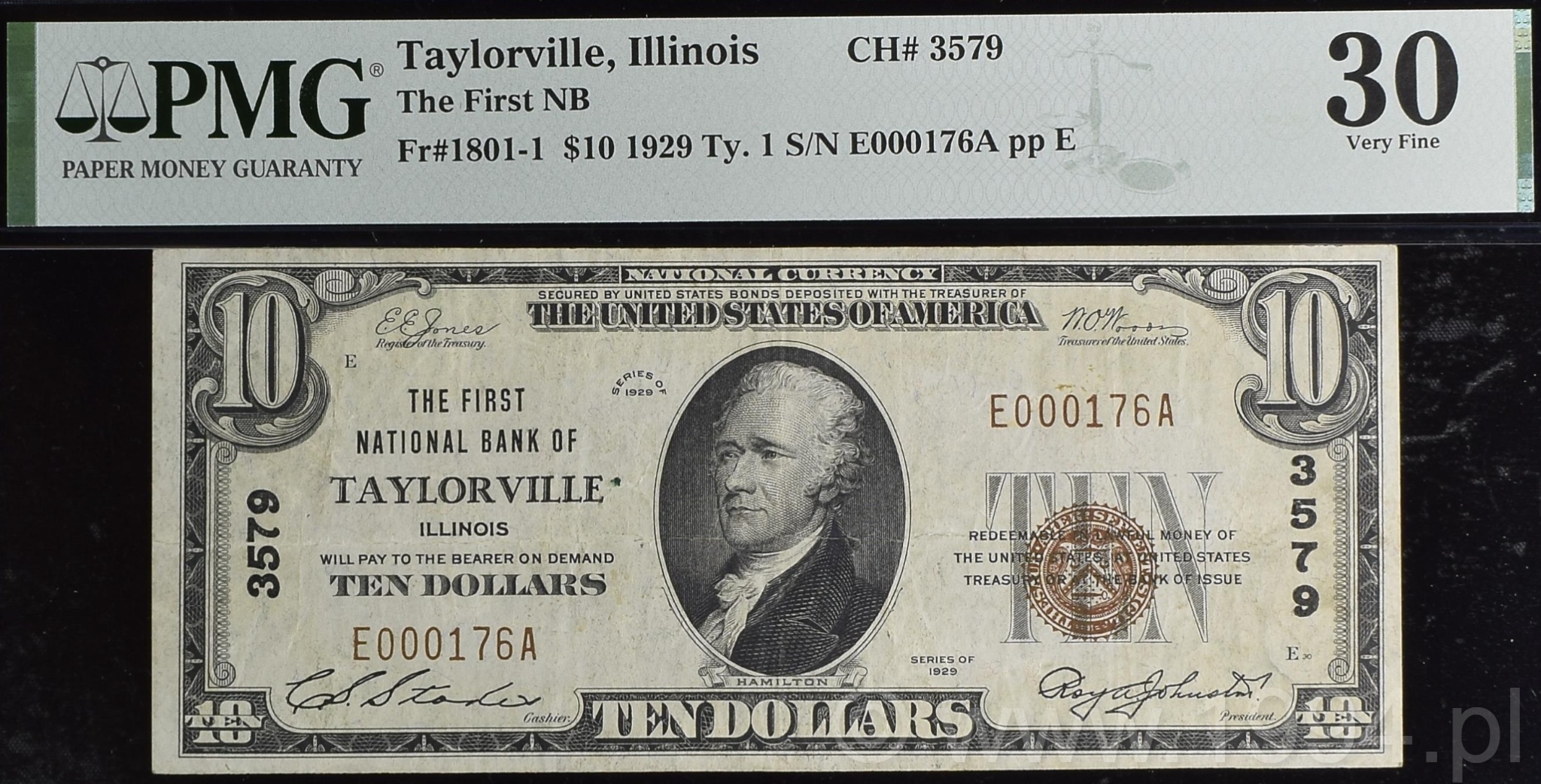Description and research notes
This Series 1929 Type 1 ten-dollar note from The First National Bank of Taylorville, Illinois (Charter 3579) is a national-level rarity and a true anomaly in U.S. banking history. The bank officially ceased operations in October 1929—barely months after the introduction of small-size National Bank Notes—making it one of the first casualties of the transition from large-size to small-size currency. Although government records indicate that no 1929 notes were released for this charter, this example, serial E000176A, proves that a small batch of $10 notes briefly entered circulation before the bank’s collapse.
Organized in 1886, The First National Bank of Taylorville had issued large-size notes since the 19th century. By 1929, it was headed by president Roy A. Johnston and cashier C.S. Stokes. When the Treasury’s conversion to the smaller 1929 format began, each active national bank received serial ranges for new issues. Taylorville’s allocated blocks—E000212A to F000212A for $10s and C000064A to F000064A for $20s—were officially listed as 'not issued.' Yet this note’s lower serial number confirms that at least part of the earliest batch was printed and released locally before the bank closed.
The result is one of the most elusive small-size National Bank Notes known: an issue that official records insist never existed. Only five examples from Taylorville’s charter are reported, and none had appeared in public auction prior to this discovery. It ranks not just as a state-level rarity for Illinois, but as a national-level outlier—one of very few cases in which a bank was shuttered before completing its initial small-size release.
Design-wise, the note follows the standard Type 1 layout, featuring Alexander Hamilton’s portrait, ornate border counters, and the charter number '3579' printed vertically at left and right. The brown Treasury seal and serials, combined with even circulation and bright paper, contribute to its appeal. Certified PMG 30 Very Fine, it remains well-preserved with full signatures of cashier C.S. Stokes and president Roy A. Johnston.
This note’s importance lies not only in its scarcity but in what it reveals about the uncertain early days of the small-size National era—when technological progress, timing, and financial collapse intersected. For researchers and collectors alike, it stands as a 'ghost issue' that escaped destruction and a cornerstone piece in the study of early-closure bank charters.
